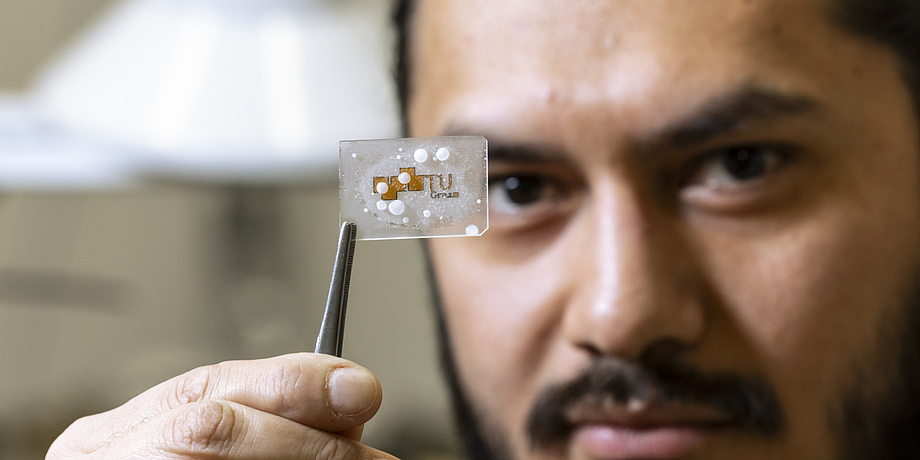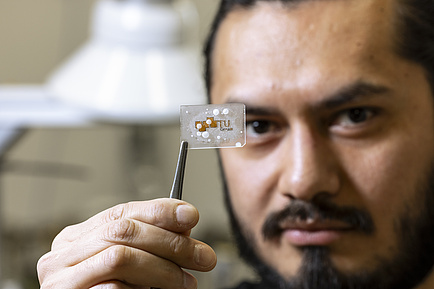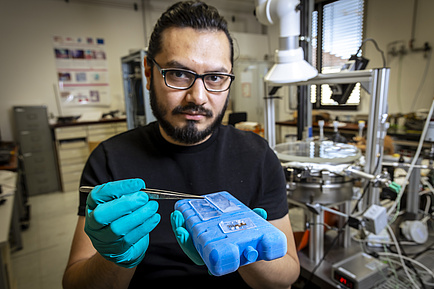Ice-repellent coatings have been around for some time, but until now they have been very sensitive and detach quite quickly from the surfaces they are meant to protect. A research team led by Anna Maria Coclite and Gabriel Hernández Rodríguez from the Institute of Solid State Physics at Graz University of Technology (TU Graz) has now succeeded in remedying this shortcoming. They have developed a highly ice-repellent coating that adheres to a wide variety of materials and is very resistant to abrasion.
Gradual transition of the two components
The researchers achieved this progress by using a manufacturing technology called initiated chemical vapour deposition (iCVD). This makes it possible for a strongly adhesive primer material to gradually transition into the ice-repellent compound. This stepless transition is achieved by applying the two materials as a changing gas mixture to the surface to be coated. Initially, the gas mixture consists purely of the primer material, but the proportion of the ice-repellent material is continuously increased during application, from 0 to 100 per cent. The result is a coating with a strongly adhesive underside and a top side that prevents ice crystals from sticking.
Random alignment of the molecules creates an ice-repellent effect
During their experiments, Anna Maria Coclite and Gabriel Hernández Rodríguez discovered what the ice-repellent property of their coating is based on. “The ice-repellent material consists of elongated molecules that adhere to the primer in a vertical or horizontal orientation,” explains Gabriel Hernández Rodríguez. “The thicker we applied the material, the more random the alternation between vertical and horizontal molecules became. And the more random the arrangement at the surface, the greater the ice-repellent effect.” This mechanism was previously unknown. The results were published in the journal ACS Applied Material and Interface.
Conceivable application in aviation and sensor technology
A wide range of applications are conceivable for this new type of coating, for example in the aviation industry: “Such a coating could speed up the de-icing of aircraft and use less antifreeze,” says Anna Maria Coclite. Sensors exposed to the weather that are disturbed by ice could also benefit from such coating.
This research area is anchored in the Field of Expertise “Advanced Materials Science“, one of five strategic foci of TU Graz



